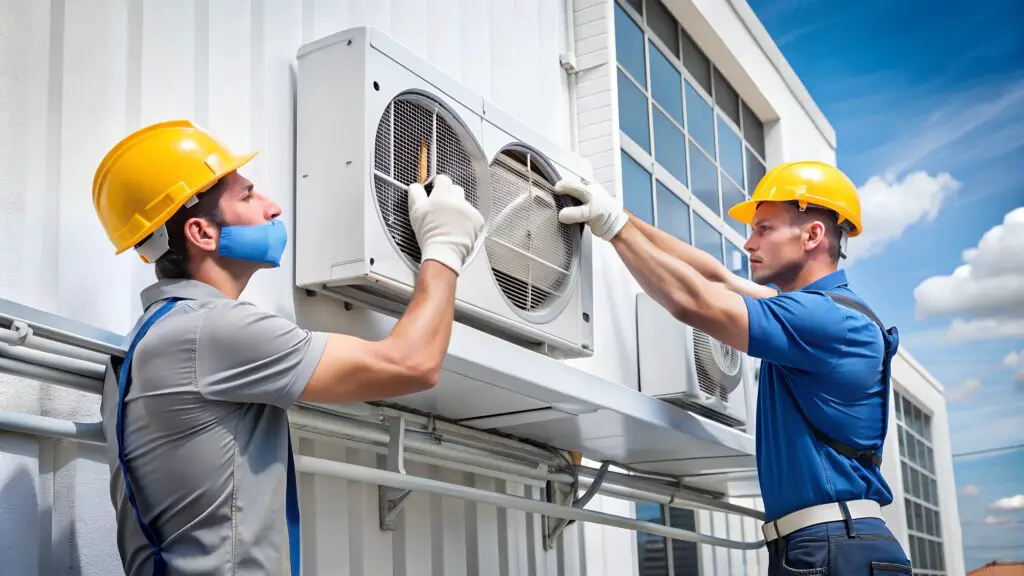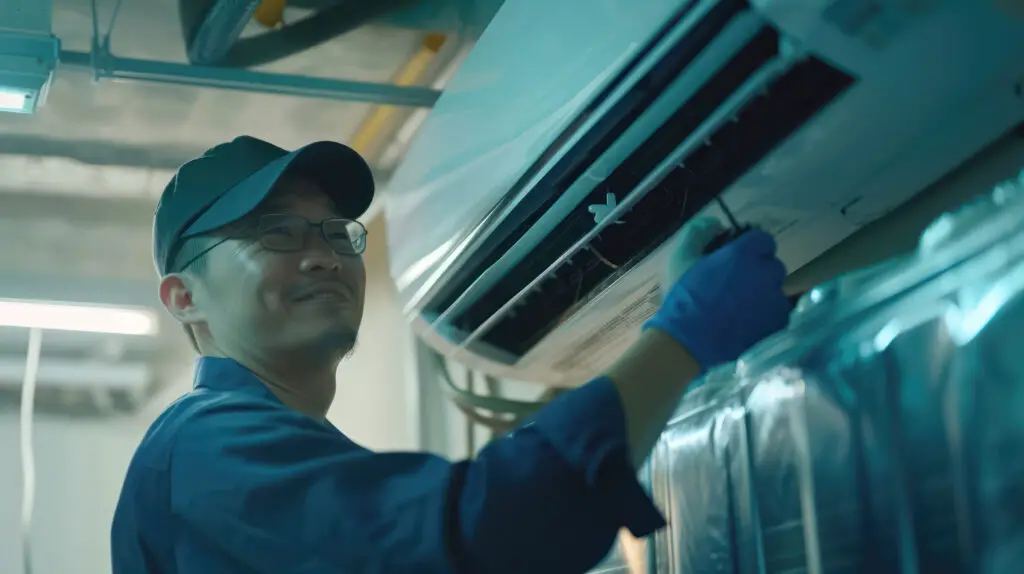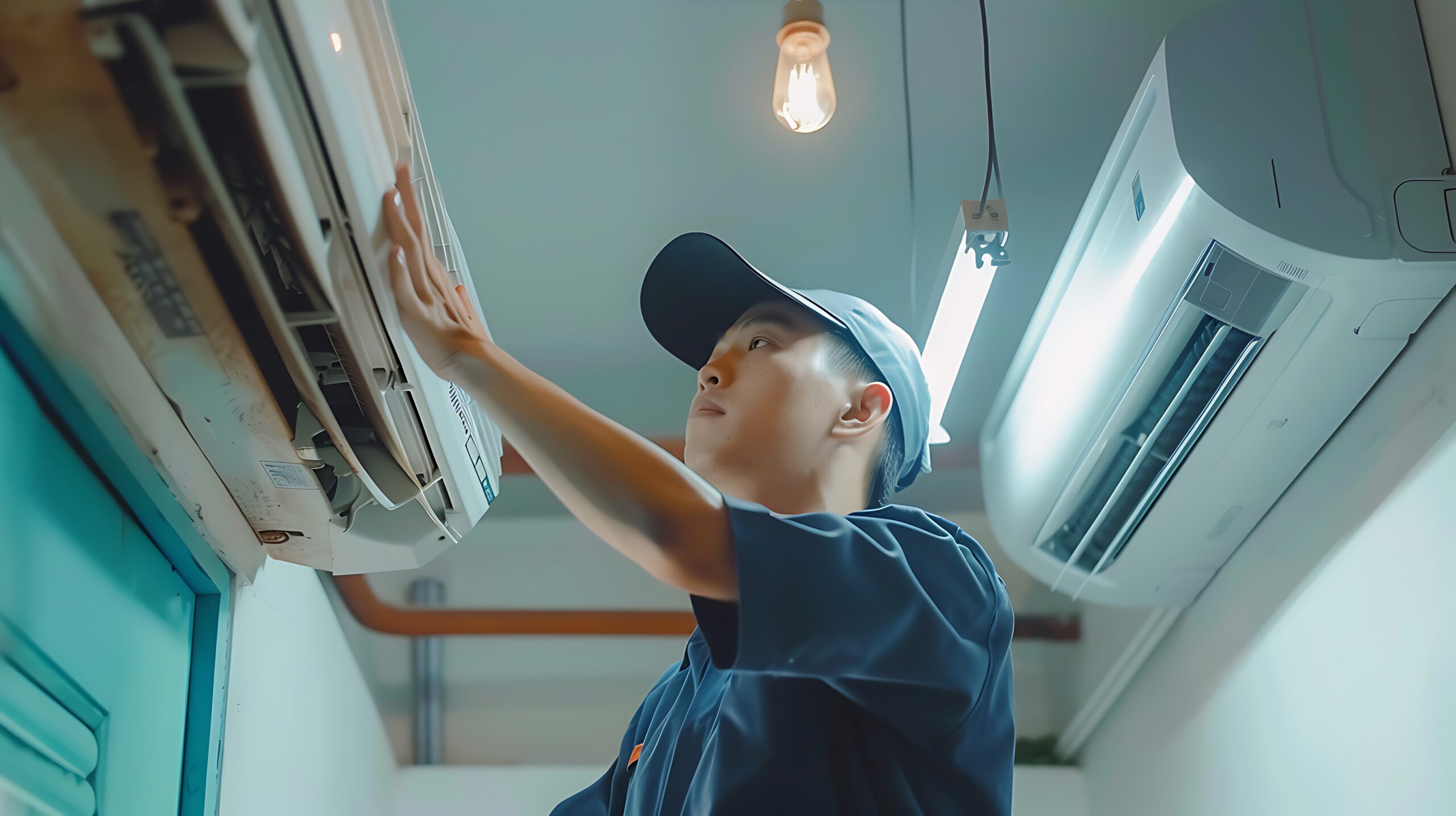Ever found yourself pondering over the inner workings of your air conditioner? Specifically, you might be asking, “Does an air conditioner use water?” It’s a question that hovers in many minds, especially as we strive to understand our appliances better and use them more efficiently.
This article will unravel the mystery, providing a clear, concise answer to your question. With a blend of science and practical insights, we’ll investigate into the mechanics of your everyday cooling companion. So, let’s begin on this enlightening journey and demystify the relationship between your air conditioner and water.
Understanding Air Conditioners and Water Use

Delving deeper into your AC system’s intricacies might seem daunting. Yet, it’s imperative to understand these systems to get a solid answer to the question, “does an air conditioner use water?”.
The Fundamentals of AC Technology
AC technology isn’t as mystifying when broken down into its basic components. An air conditioner’d core functionality lies in the process of condensation and evaporation, much like the cooling sensation your body feels upon sweating. When the air handler’s refrigerated coils interact with the room’s warmer air, condensation occurs, and the formed moisture gets removed from the room, offering a sensation of coolness. It’s simple physics, really!
In a nutshell, an air conditioner doesn’t exactly ‘use’ water, but generates it through the condensation process. It’s worth noting, evaporative coolers or swamp coolers, function differently and do require water to operate, thereby deviating from the traditional AC process.
How Air Conditioners Utilise Resources
An optimal understanding of your AC system comes from recognising how it utilises resources efficiently. While electricity remains its main energy source, water indeed plays an evident, albeit indirect, role in the air conditioning process.
Consider the initiated condensation process for example; the water formed directly aids in the efficient functioning of your AC system. So, while water isn’t a ‘used’ resource in a typical air conditioner running process, it’s indeed a ‘generated’ one, proving crucial in your appliance’s cooling function.
Types of Air Conditioners and Water Consumption
Enlightening your understanding of air conditioners, it’s time to investigate into the different types and how water consumption differs between them. Let’s take a close look at the two primary styles of units: Traditional AC Units and Modern AC Innovations.
Traditional AC Units
Although it’s established that traditional Air Conditioning (AC) units don’t directly consume water, they have a connection with it. How, you might ask? Well, these units create an environment to help a cool atmosphere, relying heavily on the principles of condensation and evaporation.
In traditional AC units, refrigerant gas absorbs heat indoors and lifts it outside, causing the gas to evaporate. This process also results in the formation of condensation, akin to the droplets formed on a chilled glass of water on a hot day. As the gas cools, it liquifies and trickles down into a drain pan, usually to be evaporated or drained away.
Although traditional AC units don’t consume water, they play a crucial role in removing humidity from your living environment – establishing their indirect relationship with water.
Modern AC Innovations
Exploring towards the area of Modern AC Innovations, we find air conditioners that utilise water differently. One key development in this field is the Evaporative Cooler, also known as a “swamp cooler.”
Unlike traditional units, evaporative coolers do consume water directly. These units work by evaporating water to lower the temperature of the air. They’re filled with water, allowing the unit to draw in hot air, pass it over wet pads, and release cooler air into a room. The hotter the climate, the more water evaporated, making these types of coolers ideal for dry, hot conditions.
While these modern innovations may use water directly, they can be more energy-efficient under the right conditions – providing a balancing act between water consumption and energy use.
With all this information in mind, we can discern that the link between air conditioners and water is not as straightforward as it first appears. Both traditional units and modern innovations have intricate relationships with water, be it through condensation or direct consumption.
Environmental Impact of Air Conditioning
When considering the interplay between air conditioners and water, it’s integral to recognise that this relationship also has environmental implications. The heavy reliance on air conditioning calls for an in-depth understanding of its overall environmental impact.
Water Usage and Its Implications
The need for cooling shouldn’t overshadow the environmental responsibilities that come with it. Traditional AC units, while not consuming water, extract moisture from the air, indirectly affecting water cycles. The generated condensation, although limited, creates wastewater if not utilised. On the brighter side, some innovative alternatives can use this ‘waste water’ effectively for secondary purposes such as irrigation.
Modern AC systems like Evaporative Coolers, which rely on water for cooling, can substantially increase water usage. For instance, a large evaporative cooler can consume up to 25 litres of water per hour. If used unwisely, this can contribute to unnecessary water waste, especially in regions experiencing water scarcity. Hence, it becomes pivotal to choose wisely while opting for air conditioning systems to strike a balance between personal comfort and environmental sustainability.
Energy Efficiency and Water Conservation
Every form of cooling has a footprint, which varies based on the device’s energy efficiency, and this applies to air conditioners as well. Traditional air conditioners and heat pumps are highly efficient in terms of water usage, but they consume quite a bit of electrical energy. Here’s an interesting statistic: air conditioning systems account for nearly 6% of all the electricity produced in the United States, amounting to an estimated 100 billion dollars in annual energy cost.
On the other hand, Evaporative Coolers, often known for their energy efficiency and lower electricity consumption, require substantial water. Is it worth saving on the energy bill only to splurge on water costs? Hence, it’s absolutely essential to prioritize both energy and water conservation when choosing an air conditioning system.
To conclude, understanding the environmental impact of air conditioning helps in making informed and responsible choices. The balance may be hard to find, but remember, there are no small choices when it comes to protecting the environment. Every little effort matters! Remember, your air conditioner does more than just keep you cool, it’s part of a global conversation about energy, water, and our shared environment.
Maintenance Tips for Efficient AC Use

Following our exploration of how air conditioners interact with water and their environmental implications, let’s pivot to some practical information. Here, we’ll investigate into maintenance tips for efficient use of air conditioning that bolsters sustainability and reduces water use.
Routine Checks to Reduce Water Use
High on the list: consistent routine checks. Among the primary causes of excessive water use in air conditioners are leaking refrigerant and blocked drain tubes. Regularly inspect your air conditioner, checking for any signs of leakage. Meditation on the coils on a bimonthly basis curtails frost accumulation, a contributing factor to water overuse.
For instance, consistently notice a pool of water near your unit? It’s a probable sign of a blocked drain tube. In this case, engaging a professional may be the most suitable solution.
Best Practices for Sustainability
In the pursuit of sustainability, adopting best practices can yield significant impacts on the ecological footprint of your air conditioning system. An excellent first step? Carry out the use of programmable timers. These efficient tools let you set the periods when your air conditioner powers on or off, preventing unnecessary energy and water usage during times when it’s not needed.
Simple lifestyle changes also make a considerable difference. Opting to open windows during cooler times of the day, for example, reduces reliance on artificial cooling. Also, maintaining a consistent indoor temperature – rather than shifting constantly – reduces overall energy consumption.
Finally, when purchasing, factor in energy efficiency ratings. Units with higher ratings typically use less water and translate to lower utility bills. By incorporating these minimal changes, you can potentially cut down your air conditioner’s water usage, contributing to the broader goal of environmental sustainability.
Remember, every drop saved counts towards creating a sustainable future. The responsibility lies within us. Let’s take a step towards that future today.
Conclusion
So, you’ve discovered that your air conditioner does indeed use water, but not in the way you might’ve initially thought. It’s all about condensation and the natural process of cooling air. While traditional units have their water usage concerns, there’s room for innovation with modern alternatives like Evaporative Coolers. It’s clear that choosing the right AC system requires a balance of personal comfort and environmental impact. But remember, it’s not just about selecting the right unit. Your role in maintaining your AC efficiently and adopting sustainable practices can significantly reduce water consumption. By making simple lifestyle changes, using programmable timers, and opting for energy-efficient units, you’re not just saving water – you’re contributing to a more sustainable future. It’s a responsibility we all share, and every little action counts.
